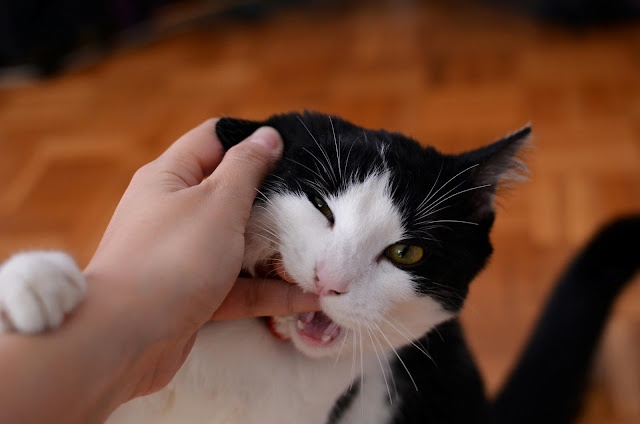Is Your Cat Overweight? How to Help Your Feline Stay Fit
Is Your Cat Overweight? How to Help Your Feline Stay Fit
As pet owners, we all want to ensure our cats live long, healthy lives. However, obesity is a growing problem among cats and can lead to serious health issues such as diabetes, arthritis, and heart disease. But how do you know if your cat is overweight? More importantly, what can you do to help your feline stay fit? In this guide, we'll discuss how to determine if your cat is overweight and provide simple steps to improve their health.
1. How to Tell if Your Cat is Overweight
- Ribs that are easily felt but not visible
- A visible waistline when viewed from above
- A slight tummy tuck when viewed from the side
If you notice a lack of definition in your cat’s waist or if you have trouble feeling their ribs, your cat may be overweight.
2. Common Causes of Weight Gain in Cats
- Overfeeding: Feeding your cat too much or too often can lead to weight gain. Free-feeding, where food is left out all day, can also cause overeating.
- Lack of Exercise: Indoor cats tend to lead more sedentary lives, which can make weight gain more likely.
- Treats and Human Food: High-calorie treats and table scraps can add unnecessary calories to your cat’s diet.
- Age: As cats age, their metabolism slows down, making it easier to gain weight.
3. Health Risks of Obesity in Cats
- Diabetes: Overweight cats are at a higher risk of developing diabetes, a condition that can require lifelong management.
- Joint Problems: Carrying extra weight puts additional strain on your cat’s joints, leading to arthritis and mobility issues.
- Heart Disease: Just like in humans, excess weight can increase the risk of heart disease in cats.
Maintaining a healthy weight is key to preventing these conditions and ensuring a longer, healthier life for your cat.
4. Tips for Helping Your Cat Lose Weight
If your cat is overweight, there are several steps you can take to help them slim down and improve their overall health.
a. Consult Your Veterinarian
Before making any changes to your cat’s diet or exercise routine, consult your veterinarian. They can assess your cat’s current weight and health, and recommend a safe and effective weight-loss plan. Never put your cat on a crash diet, as this can lead to liver problems.
b. Control Portion Sizes
Many cats become overweight because they are simply eating too much. Use a measuring cup to portion out your cat’s meals, and follow the feeding guidelines on the cat food packaging. Keep in mind that these are general recommendations, and your vet can provide a more specific feeding plan based on your cat’s needs.
c. Switch to a Weight Management Formula
There are many commercial cat foods designed specifically for weight management. These foods are lower in calories but still provide the necessary nutrients your cat needs. Look for high-quality options that list meat as the primary ingredient and avoid foods with fillers like corn or soy.
d. Limit Treats
While it’s tempting to give your cat treats, especially when they beg for them, treats should be limited. Choose healthy, low-calorie treats, and make sure they only make up about 10% of your cat’s daily calorie intake. Alternatively, reward your cat with playtime or affection instead of food.
e. Encourage More Exercise
Exercise is key to helping your cat lose weight and stay fit. Here are some simple ways to get your cat moving:
- Interactive Toys: Use laser pointers, feather wands, or balls to engage your cat in active play.
- Climbing Towers and Scratching Posts: Encourage your cat to climb and explore by providing vertical spaces.
- Scheduled Playtime: Set aside time each day for active play sessions. Even 15 minutes a day can make a big difference in your cat’s activity level.
5. Monitor Progress
Track your cat’s weight-loss journey by regularly weighing them. Many vets offer free weight checks, or you can use a pet scale at home. Monitor for gradual weight loss, and make adjustments to their diet and exercise routine as needed. Remember, weight loss should be slow and steady—about 1-2% of body weight per week.
6. Maintain a Healthy Weight
Once your cat reaches their ideal weight, it’s important to maintain it. Continue portion control and regular exercise to prevent future weight gain. Maintaining a healthy weight will help your cat live a longer, more active life.
Conclusion: A Healthier, Happier Cat
Helping your cat maintain a healthy weight is one of the best things you can do to ensure they live a long, happy life. By understanding the signs of obesity and following these simple steps, you can help your cat shed those extra pounds and stay fit. Regular vet check-ups, portion control, and engaging exercise will go a long way in improving your cat’s overall health.
.png)



.jpeg)



